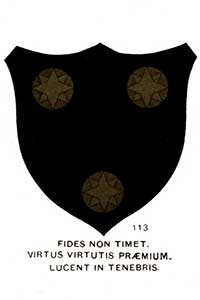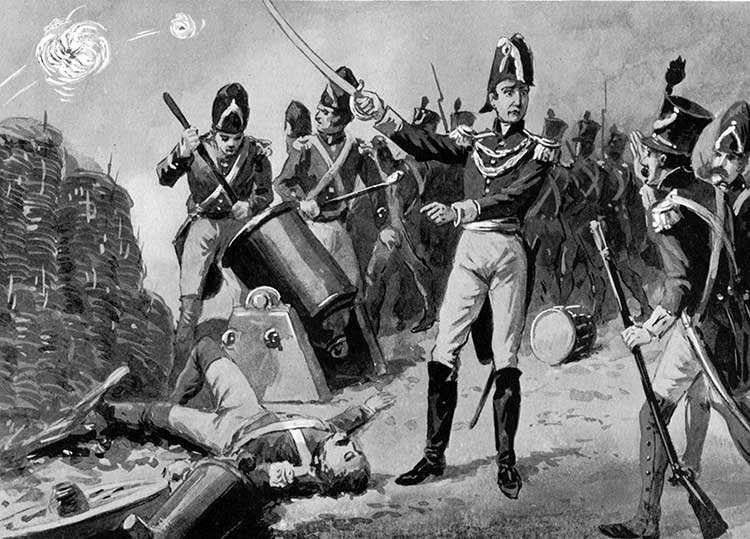The Moran or O’Moran Family

(Crest No. 113. Plate 50.)
THE Moran family is descended from Milesius, King of Spain, through the line of Ir, the fifth son of that monarch, and belonged to the Clanna Rory tribe, founded by Heber Donn, son of Ir.
The founder of the O’Moran family was Laoiseach Kean More, son of the celebrated warrior, Conal Kearnach. The ancient name was Mordhan, and signifies “Noble,” and was taken from Murchadhain, a chief of the sept.
The chiefs of the O’Morans held extensive possessions in Roscommon, Mayo, Sligo, and Kerry. In the County of Roscommon they possessed the territory lying between Belanagare and Elphin, and the head of the sept, O’Mughroin or Moran, was, with O’Cathail or Cahill, and O’Maolruanaidh, Mulrooney or Rooney, one of the three Chiefs of Crumthan or Cruffan, a district comprising the barony of Killian and part of Ballymoe, in the County Galway.
The O’Morans were distinguished for their brave and persistent resistance to the encroachments of the Anglo-Norman power, and when resistance was no longer possible, they suffered the fate of the other Irish septs of the place and period in the loss of their possessions.
After the close of the Williamite war in Ireland, many of them went to France, where we find their names in the list of officers in the Irish Brigade, and subsequently in commands outside of that body. One of these, Lieutenant-General James O’Moran, is worthy of mention, both on account of his distinguished military record and his unfortunate fate.
General O’Moran was born in the town of Elphin, in the County of Roscommon, May 1, 1739, and was the son of a poor shoemaker. He went to France when he grew to manhood, and enlisted as a private in Dillon’s Regiment, Irish Brigade. He rose by his courage, skill and conduct to the rank of Maréchal-de-Camp, or Major-General, 1784, and to that of Lieutenant-General in 1792. He also for a time administered the government of Conde, and he was honored with the distinction of Chevalier of the Order of St. Louis and the American Order of Cincinnatus.
In the famous defense of Dunkirk by General O’Moran, in 1793, where, with three thousand French troops, he successfully resisted the thirty-five thousand English and allies under the Duke of York, General O’Moran bore a conspicuous part. The position, even according to the testimony of the English and the allies, was “destitute of any real defense,” the works being “in a most deplorable condition,” and the garrison was outnumbered by more than ten to one. General O’Moran commanded the right wing of the French forces, and by his skill and intrepidity baffled all the attempts of the enemy directed against him, and largely contributed to the successful result. This brave officer having, through his stern sense of justice and honesty, incurred the enmity of some of the hell-hounds of the French Revolution, who were at the time insane from blood and carnage, was seized and put to death.

LIEUTENANT-GENERAL JAMES O’MORAN,
Chevalier of the Order of St. Louis..
The name of this family is numerously represented to-day in many parts of Ireland, as also in the United States and the British Colonies. The Most Rev. Dr. Moran, Cardinal Archbishop of Sydney, Australia, and author of many valuable works on Irish historical subjects, is an illustrious scion of this family. Among the worthy representatives of this family are Colonel James Moran of the Sixty-ninth Regiment, New York, and the Rev. James Moran, one of the most successful pastors of Brooklyn, N. Y.
